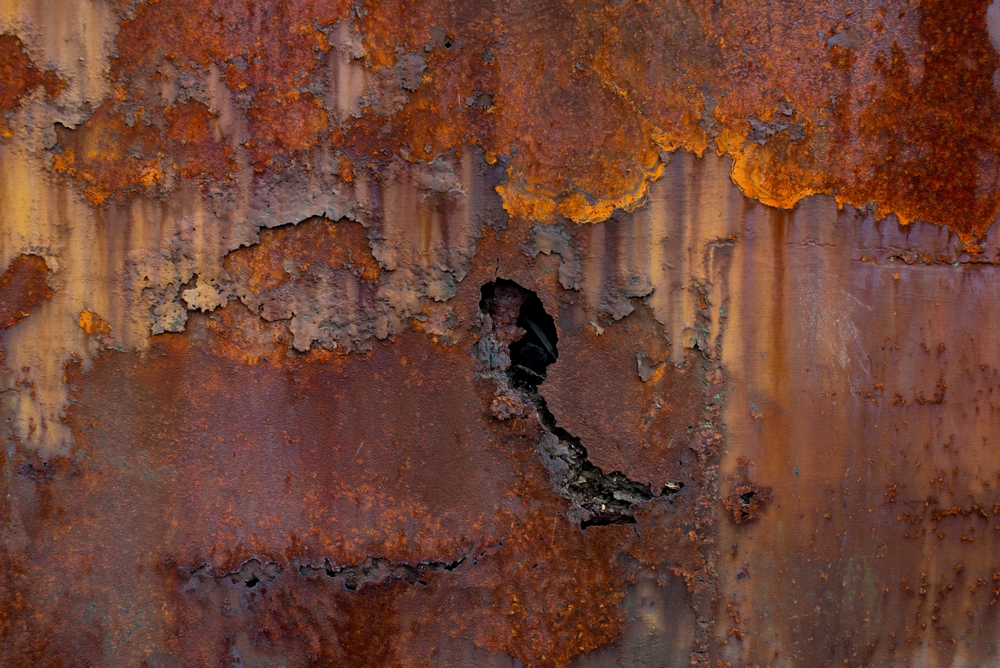When exposed to water, bare steel will eventually corrode and form rust holes. Rust can spread quickly, so it’s essential to repair the damage as soon as possible. An excellent way to tackle rust holes is to fill the hole with spray foam insulation.
However, the type of spray foam insulation you should use depends on the size of the rust hole and where it’s located. Open cell foam is too porous to prevent rust. Closed cell would make sense, but the rust should be removed first. For small holes, a flexible polyurethane foam may be enough to fill the hole.
Here’s an overview of the steps you’ll need to take to fix a rust hole with spray foam insulation.
Is Spray Foam a Good Solution?
Spray foam insulation can be a great solution for rust hole repairs. The foam expands when it’s applied and creates an airtight seal that prevents moisture from getting in and causing further damage.
Additionally, the insulation can help add strength to support the metal around the rust hole, making it less likely to corrode in the future. However, check the manufacturer’s instructions and recommendations before using spray foam insulation for any repair job.
Spray foam may not work in certain cases, such as when the hole is too large or located in a difficult-to-reach area. For instance, if the hole is located behind a wall, it may be better to use an epoxy or patching compound instead.
What Spray Foam to Choose?
The type of spray foam insulation you should use depends on the size and location of the rust hole. Closed-cell foam is usually used for larger holes and outdoor applications, while the open-cell foam is generally better for smaller holes that are located indoors.
Recommended: Open Cell vs Closed Cell Spray Foam: Read This Before Choosing [With Checklist]
When choosing spray foam insulation, pay attention to the product’s specifications for coverage area and drying time. You also want to make sure that the foam is suitable for the environment you’re working in.
For example, some types of foam may not be suitable for wet or damp areas. Therefore, if you’re working in an area with high humidity, use a foam specifically designed for that application.
How to Use Spray Foam To Fix Rust Holes
Once you’ve chosen the right type of spray foam insulation, you can start filling the rust hole. Here’s a step-by-step guide on how to fix a rust hole with spray foam insulation:
Step 1: Clean the Area
Clean the area around the rust hole with a wire brush or sandpaper to remove any loose rust or debris. Make sure the area is clear and dry before proceeding.
Step 2: Apply Primer
Apply a rust-inhibiting primer to the area around the rust hole. It will help keep the metal from corroding further and ensure the foam sticks better.
You can use a brush or aerosol to apply the primer. If you’re using a spray, hold it far enough away from the surface so that you don’t get any overspray.
Step 3: Apply Foam
Attach the spray foam insulation to the nozzle of a spray gun. Point the nozzle away from you and the area you’re working on before turning it on.
Spray the foam insulation into the rust hole until it is filled. The foam will expand as it dries, so you may need to apply several coats of foam for large holes.
Step 4: Let Dry
Let the foam dry completely before you move on to the next step. The drying time will depend on the type of foam you use. In most cases, spray foam takes about 24 hours to cure.
Step 5: Sand and Paint
Once the foam has dried, sand down any rough edges with fine-grit sandpaper, but use the appropriate PPE and provide ventilation. You can then apply a coat of paint to the area to help protect it from rust in the future.
Tips to Fix Rust Holes With Spray Home
If you want to DIY your rust hole repair, here are a few tips to help make the process easier:
- Wear protective equipment such as goggles and gloves when handling the foam insulation.
- If the rust hole is very large, you may need to cut a piece of metal mesh and place it in the hole before adding foam insulation. It will help provide additional structural support.
- Read the manufacturer’s instructions and safety precautions before using any type of spray foam insulation.
Alternatives For Fixing Rust Holes
Besides using spray foam insulation, you can also repair rust holes using patching kits or epoxy putty. Patching kits are pre-mixed mixtures of epoxy and other ingredients that can be used to fill in large rust holes.
Epoxy putty, on the other hand, is a clay-like material that can fill small rust holes. It comes in various colors, so you can match the color of the metal. However, it’s important to note that epoxy putty and patching kits are only suitable for small rust holes. Larger holes can be welded or patched with sheet metal.





